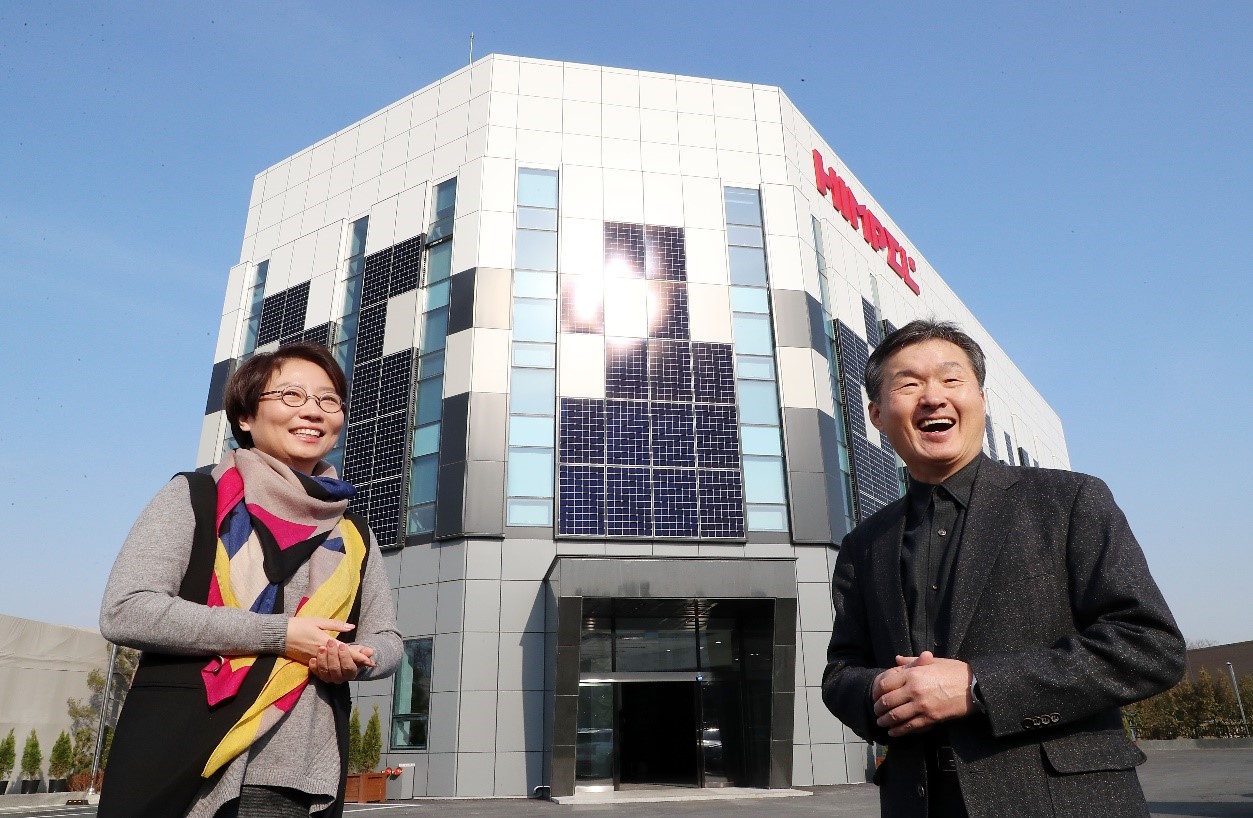
First Zero Energy Factory in Korea designed by MI Champion Myoungju Lee (left hand side)
Photo by DongA.com
Myoungju Lee is a Professor at the College of Architecture at Myongji University, where she is also the Director of the Zero Energy Architecture Center. Her work has focused on high efficiency building design and architecture, and she has successfully launched the net- zero energy housing complex (NOWON EZ HOUSE) 2017 in South Korea.
What does being an MI Champion mean for you?
I am very honored representing Korea and Mission Innovation as an MI Champion. After becoming an MI Champion, I presented the ‘Low Carbon Town Project’ at the ‘Workshop on the Path to Inclusive Energy Transition in the APEC Region’ as recommended by the Korean Ministry of Foreign Affairs. As many Koreans are not aware of Mission Innovation, I make sure to introduce the initiative and the Champions Programme at each lecture I hold.
What personal achievements are you most proud of since becoming an MI Champion?
On 5 June 2019, World Environment Day, I was awarded the medal of government recognition by the president of South Korea, President Moon Jae In, as an MI Champion representative of Korea for reducing the carbon footprint in the built environment. Just a few months later, in December 2019, we completed the very first zero energy factory in Korea with ZED architects co. Ltd, which I founded in 2010. HimPel Inc, a ventilator manufacturer, built its third four-story building with the goal to minimize the use of external energy. This involves good insulation and tightening, the installation of super-efficient equipment and the use of photovoltaic. With the design, I also set high value on improving the work environment for employees. Since this was the proof that factories could be zero energy buildings, we got lots of media attention.
Also, Korea’s policies are gradually moving in line with global trends about combating climate change. From January 2020, new public buildings over 1,000 square meters are required to have net zero energy consumption. In 2025, that requirement will extend to public buildings of at least 500 square meters, private buildings of at least 1,000 square meters, and apartment buildings with at least 30 units. In 2030, all new structures of at least 500 square meters, both public and private, will have to have a zero-energy profile.
Do you have any upcoming plans or announcements that you would like to share with the MI community?
There is a lesson from COVID-19 pandemic. It is that we have to accelerate to reduce carbon emissions and to prepare for climate change adaption. As part of the Green New Deal policy, President Moon Jae In announced the remodeling of aged public facilities, like seniors centers and daycares, and public rental apartment complexes to zero energy buildings since 2020. The city of Seoul will also obtain Zero Energy building certificates for private buildings starting in 2020, not 2025. All of us are on our way to the Zero Energy City. In the transition of these paradigms, I, myself, as an architect who designs zero energy buildings and cities, would like to show how to design generation-friendly playgrounds, environmental facilities and even smart energy flatforms to be net-zero energy facilities throughout the city